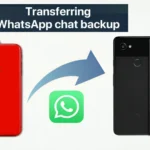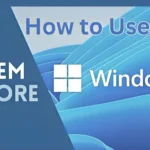When a new smartphone model is released, the industry is usually excited about it, especially if the manufacturer has a long history, like Motorola. Among these is the Motorola Razr 40, which claims to combine modern technology with a hint of nostalgia. Let us explore the Motorola Razr 40 Review, its design, functionality, features, and other aspects.
Motorola Razr 40 Review: Ultra Price in India
In India, the Motorola Razr 40 Ultra costs Rs 44,999 and has 256GB of internal storage in addition to 8GB of RAM. There are two finishes for the phone: Infinite Black and Viva Magenta. For review, I was given the Infinite Black unit. Motorola includes a Type-A to Type-C USB cable for charging, a transparent TPU hard case, and a 33W charger in the box.
Motorola Razr 40 Specifications
- Android 13
- Launch colors: Sage Green, Summer Lilac, Vanilla Cream
- Cameras:
- 64Mp, f/1.7, OIS main camera
- 13Mp, f/2.2 ultrawide camera
- 32Mp, f/2.4 selfie camera
- 4200mAh
- 30W wired charging
- 5W wireless charging
- Stereo speakers
- 1.5in, OLED cover display
- 6.9in, 144Hz LTPO pOLED, Full HD+ main display
- Side fingerprint scanner (power button)
- Qualcomm Snapdragon 7 Gen 1
- 8GB RAM
- 256GB storage
- Gorilla Glass Victus (external)
- 5G
- IP52 Water-repellent
- Bluetooth 5.3
- Wi-Fi 6E
- GPS
- Nano-SIM
- USB-C
- 73.95 x 170.83 x 6.99mm (open)
- 184.5/188.5g
Design
When the Motorola Razr 40 Ultra is folded (15.1mm) or open (6.99mm), it has a rounded overall design that makes it appear thin. This foldable sits flat against both halves with no space between them, which I like. When folded, this further contributes to its overall slim appearance—a stark contrast to the significantly thicker Samsung Galaxy Z Flip 4.
The phone’s two rear-facing cameras, which nearly sit flush with the glass surface of the cover display, are another excellent design by Motorola. Like the rear panel, this cover display is impressive in and of itself, composed of Gorilla Glass Victus. First off, Motorola did an amazing job of perfectly integrating the two cameras into it, including the separate LED flash and nearly flawless cutouts around each camera. Second, the Razr 40 Ultra has an extremely refined and high-end look thanks to the 3D curved-edge glass screen that encircles the top edges of the metal frame.
The Internal Display
When the phone is opened, a clear, tall 6.9-inch pOLED display (1080×2640 pixels) with a refresh rate of 144 Hz and a maximum brightness of 1,4000 nits is visible. Even with regular use, the crease is hardly noticeable. Despite the harsh sunlight, it is simple to use and read outdoors.
The Razr 40 made watching and consuming content enjoyable because the videos had sharp, detailed images and vibrant colors. However, it’s unfortunate that Widevine L1 certification isn’t supported, as this limits content consumption from OTT apps to standard resolution. Fortunately, Dolby Atmos compatibility and a powerful stereo speaker setup are included.
Cameras
- 32MP selfie camera
- 64MP f/1.7 primary camera – PDAF/OIS
- 13MP f/2.2 ultrawide – 120-degree FOV
Battery and Charging
Historically, the batteries on flip phones have been smaller than those on your average 2023 phone. However, the Razr 40 performs noticeably better than the Galaxy Z Flip 4. It includes a 33W charger in the box along with a 4,200mAh battery. Without the need for additional juice, the phone could run for the whole day. On the other hand, AOD is disabled and usage is moderate. We succeeded in gaining approximately five hours of screen time. The phone requires approximately one hour and five minutes to charge from a dead state fully.
Software
The software on the Motorola Razr is quite similar to that of a Google Pixel, which is a positive thing because Motorola modifies Android very little. The amount of extra menus, widgets, and pop-up buttons that detract from the current task is minimal. Better yet, Motorola offers a few distinct gesture commands that are helpful and easy to remember.
The flashlight activates by holding the phone and chopping on it. The camera turns on when you rotate your wrist back and forth a few times. Even with the phone closed, the Razr recognizes these gestures thanks to its intelligence. All it takes is a gesture to use the cover display for quick selfies or to use it as a compact flashlight.
Though limited in its capabilities, the cover display can perform some helpful functions. On that tiny screen, you get six widgets to choose from, such as media playback, contacts, calendar, and weather. In addition, there are widgets for timers and voice recording—the latter of which seems especially helpful for editors like me. It would be great to have the ability to add additional widgets, particularly those from third parties, but at the moment, only these six features are offered.
Conclusion
Motorola Razr 40 Review, With its stylish foldable design and cutting-edge features that seamlessly combine nostalgia and contemporary technology, the Motorola Razr 40 dazzles. Even with its limitations, such as Widevine L1 support, its powerful specs, sophisticated display, competent cameras, and effective software make it an appealing option. When it comes to high-end foldable smartphones, the Razr 40 sets the standard.





